Small chicken coops are an excellent option for those who want to raise backyard chickens without requiring a lot of space. They come in many designs that can fit any yard or garden, proving that you don’t need a large area to enjoy the benefits of homesteading. Creating a cozy and efficient small chicken coop allows chicken owners to provide a safe environment while maximizing available space.
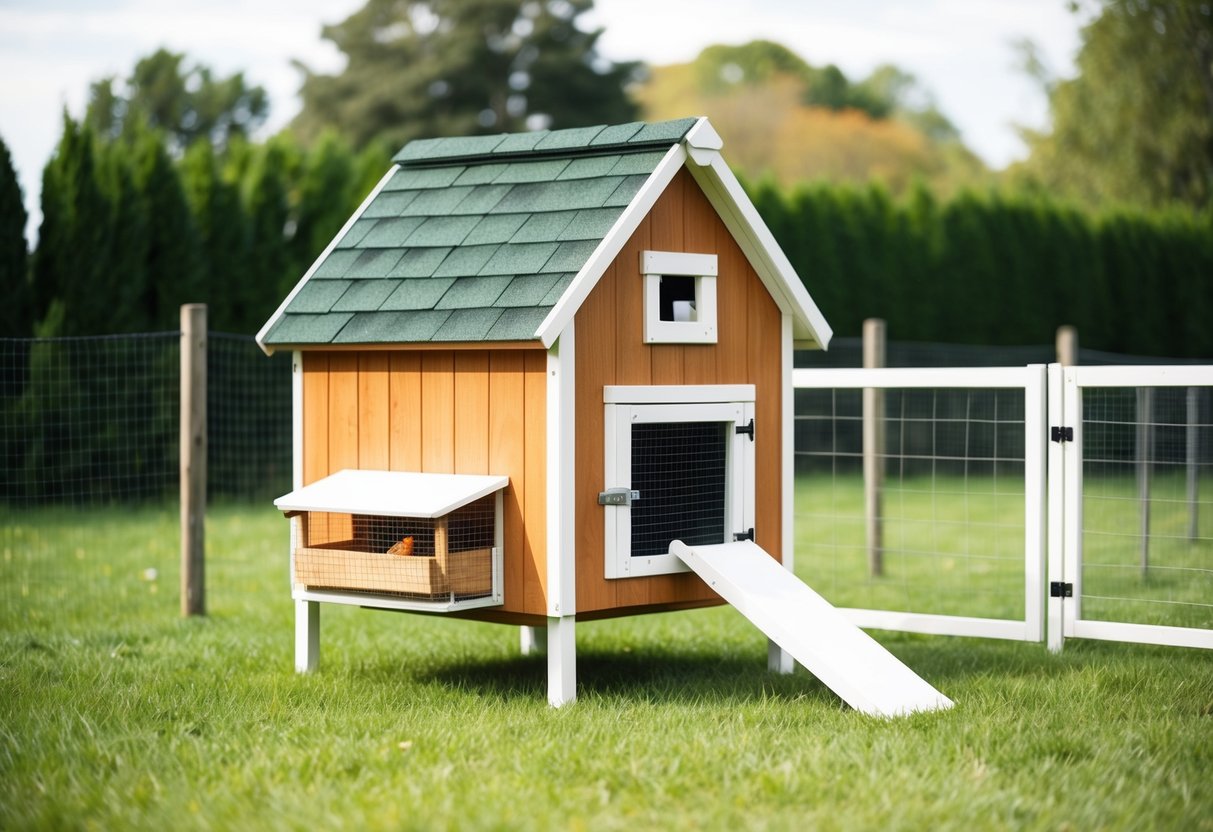
When considering the perfect coop design, it’s important to think about both functionality and comfort. A well-designed small chicken coop can be easy to maintain and provide adequate ventilation and protection from predators. Exploring various ideas helps in finding one that matches personal style while meeting the needs of the chickens.
For anyone interested in keeping chickens, discovering innovative small coop ideas can spark creativity and excitement. Whether it’s a portable coop or a fixed structure, the right choice can enhance the experience of raising backyard chickens and lead to a productive and enjoyable journey in homesteading.
Understanding Chicken Coop Basics
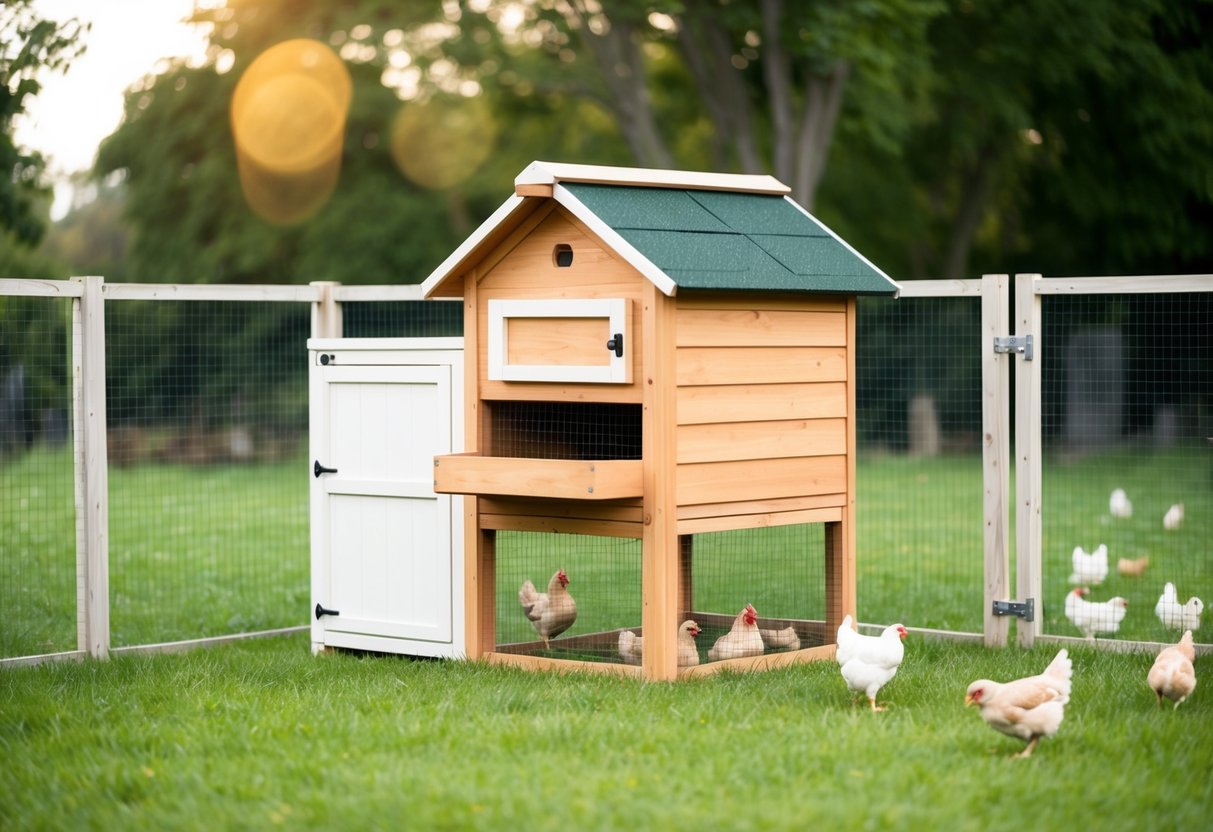
A chicken coop is essential for keeping chickens safe and healthy. Basic knowledge about coops includes their benefits and the types available for different needs.
Benefits of Raising Backyard Chickens
Raising backyard chickens offers many advantages. Fresh eggs are a major draw, providing a reliable source of nutritious food. Chickens can lay eggs daily, depending on the breed.
Chickens also help manage pests. They eat insects, reducing the need for chemical pesticides. Additionally, they can assist in composting by turning kitchen scraps and garden waste into nutrient-rich fertilizer.
Having chickens can also support family bonding and responsibility. Children can take part in the daily care of the birds. This promotes learning about food production and animal care while creating a fun family project.
Different Types of Chicken Coops
Various chicken coops cater to different needs. Mobile coops allow for easy relocation, giving hens access to fresh grass. This type is great for small spaces as it provides new ground regularly.
Stationary coops offer a permanent home. They typically include nesting boxes and roosting areas. Traditional designs often suit larger flocks but can be modified for smaller settings.
Bantam chicken coops are compact and ideal for smaller breeds. Bantam chickens are lighter and require less space, making them perfect for urban environments.
Choosing the right coop type depends on available space, the number of chickens, and personal preferences. Each design has features that can enhance the well-being of the flock.
Key Elements of Coop Design
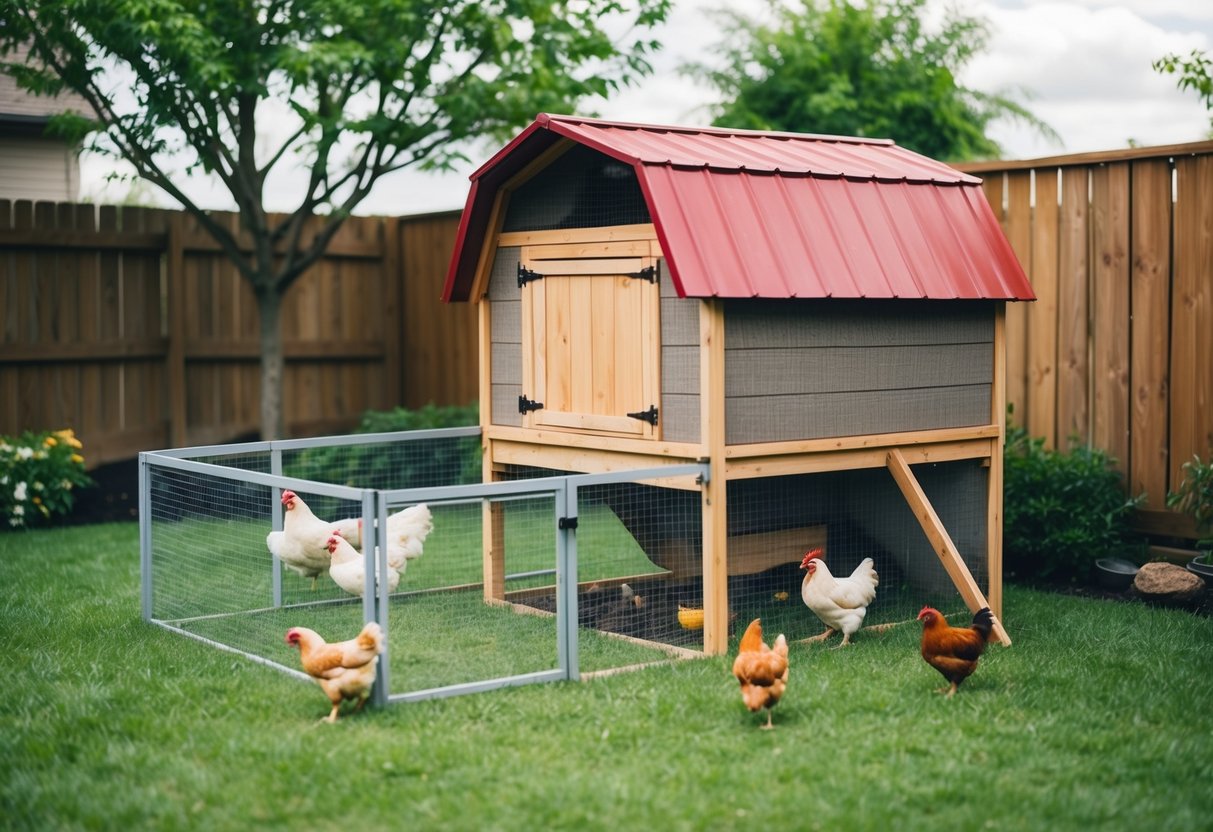
Designing a chicken coop involves careful consideration of size, materials, and airflow. Each of these elements plays a critical role in creating a safe, comfortable environment for the flock.
Selecting the Right Size for Your Flock
Choosing the correct size is essential for the health of the chickens. A general rule is to allow about 4 square feet per chicken inside the coop. This space prevents overcrowding, which can lead to stress and health issues.
For outdoor runs, aim for 10 square feet per chicken. This area helps chickens explore and exercise.
For example, a coop for six chickens should be at least 24 square feet inside. Consider the breed; larger breeds may need more space. Keep in mind that young chicks will need room to grow at a later stage.
Choosing Durable Materials
Durability is key in coop materials. Use weather-resistant siding such as plywood, with a good sealant to protect against moisture.
Roof panels should be strong enough to withstand storms. Metal or asphalt shingles are good choices.
For floors, something sturdy like painted plywood or concrete can help prevent wear and damage over time.
It’s important that all materials are non-toxic. Chickens peck at everything, so ensuring the materials are safe is crucial.
Efficient Ventilation and Insulation
Proper airflow is necessary for a healthy environment. Ventilation helps remove excess moisture and ammonia, promoting better air quality.
Install vents near the roof to allow warm air to escape. This helps keep the coop cooler in summer.
In colder months, good insulation keeps chickens warm. Use materials like foam board for walls and ceilings.
Ensure insulation is covered with a safe barrier to prevent pecking.
Finding a balance between ventilation and insulation is important for year-round comfort.
Essential Features of a Chicken Coop
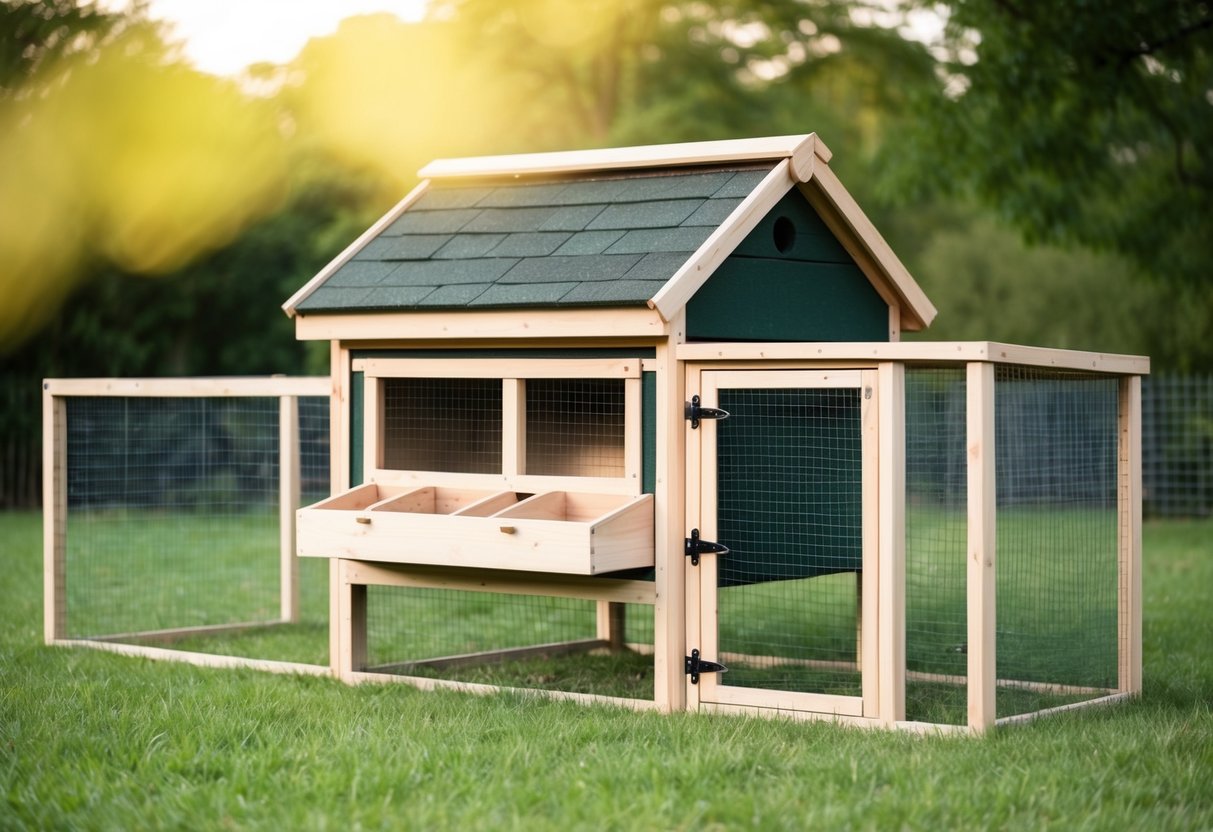
A well-designed chicken coop includes several key features to ensure the comfort and safety of the chickens. The right nesting boxes, suitable roosting bars, and effective predator-proofing are essential elements that every chicken owner should consider.
Nesting Boxes and Their Placement
Nesting boxes are vital for hens to lay eggs safely. Each box should measure around 12 inches wide, 12 inches high, and 14 inches deep, providing enough space for hens to feel secure.
The ideal number of nesting boxes is one box for every three to four hens. Placing boxes in a quiet corner helps reduce stress.
Using sturdy materials like reclaimed wood or plastic makes cleaning easier. Access should be simple to collect eggs without disturbing the hens. Ensure that the boxes are at a comfortable height for the hens to access them easily.
Roosting Bars for Comfortable Sleep
Roosting bars offer chickens a place to sleep off the ground, which helps them feel safe and secure. The bars should be about 2 to 4 feet above the ground.
Each bar should be at least 2 inches wide for comfort. A helpful tip is to use materials like a 2×4 board, as it provides a good grip for the chickens.
The bars should be spaced at least 12 inches apart to prevent squabbles among birds. Keeping the roosting area high and away from nesting boxes helps avoid droppings in the egg-laying space, which promotes cleanliness.
Secure Latches and Predator Proofing
Predator-proofing is crucial to protect chickens from threats such as raccoons and foxes. Using hardware cloth instead of chicken wire ensures better security, as it is stronger and more durable.
Coops should be firmly anchored to the ground. All openings must have secure latches that can withstand attempts to open them.
Closing small gaps is important; even a space as small as 2 inches can allow predators access. Regularly checking the coop’s structural integrity helps maintain safety for the flock, ensuring they remain unharmed from outside dangers.
Designing a Chicken Run
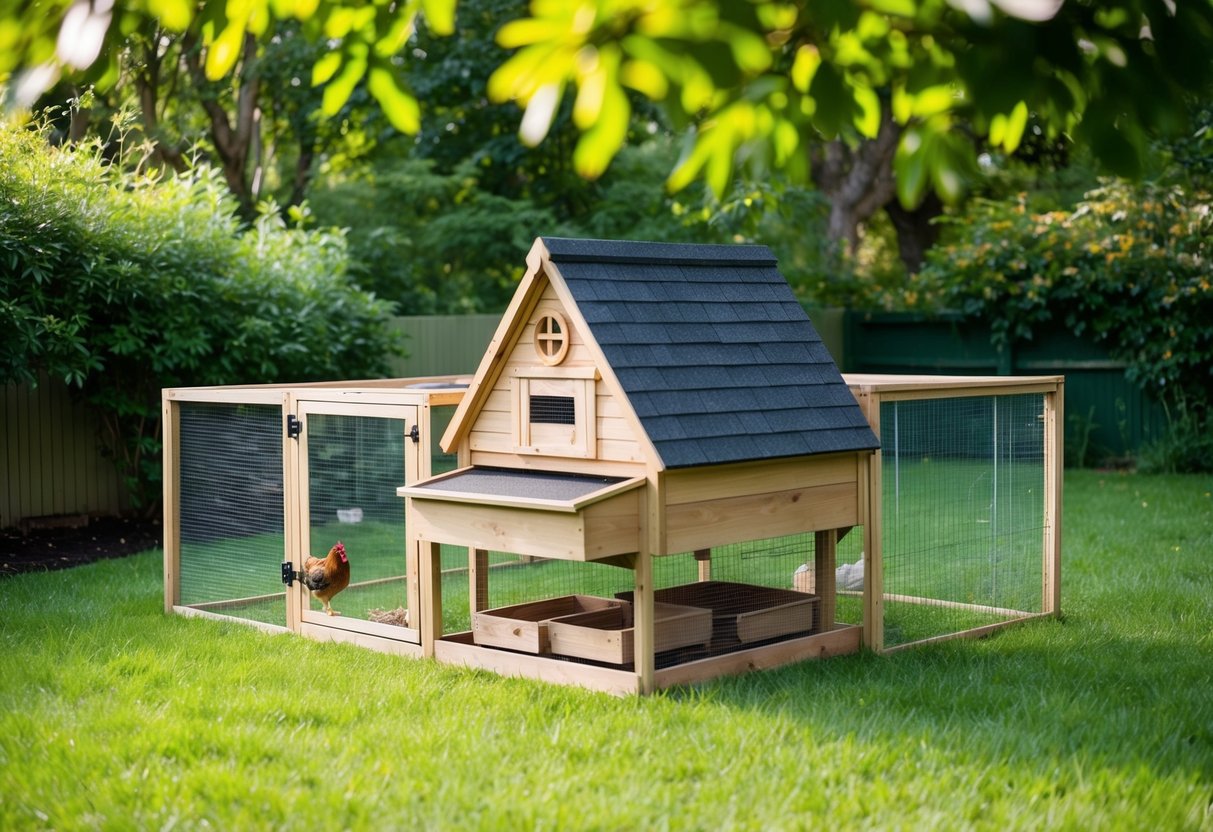
A well-planned chicken run is essential for keeping chickens safe and happy. It allows them to roam freely while protecting them from predators. When designing a chicken run, it’s important to consider space requirements, how it connects with the coop, and the materials used for fencing.
Calculating Space Requirements
When calculating space for a chicken run, consider the number of chickens. Each chicken needs about 10 square feet in the run. For example, a run for five chickens should be at least 50 square feet.
Proper ventilation is also needed. A well-ventilated area reduces moisture build-up and keeps chickens comfortable. Adding shade and shelter from rain will enhance their environment.
Plan for activities like scratching and dust bathing. These behaviors are natural for chickens and essential for their health. He wants to ensure there’s enough space for these activities.
Incorporating a Chicken Run in Coop Plans
Integrating the chicken run with coop plans is key for functionality. The run should be easily accessible from the chicken coop. A door or ramp connects the two spaces, allowing chickens to enter and exit safely.
Positioning the run near the coop simplifies daily tasks, like feeding. It’s crucial to think about drainage too. A well-drained area in the run helps maintain cleanliness and hygiene.
Additionally, ensure that the chicken run is easy to clean. Consider materials that allow for simple maintenance and regular cleaning. He can create a seamless flow between the coop and run to make care easier.
Choosing the Right Fencing
Selecting the right fencing is vital to protect chickens from predators. Chicken wire is a popular choice, but it may not be strong enough against larger animals. Using stronger materials, like hardware cloth, can provide better security.
It’s important to bury the fencing underground to prevent animals from digging underneath. A depth of at least 12 inches is recommended.
Ensure the fencing is tall enough to prevent birds of prey from swooping down. A height of about six feet is often effective. He should regularly check for holes or damage to maintain security.
Coop Maintenance and Upkeep
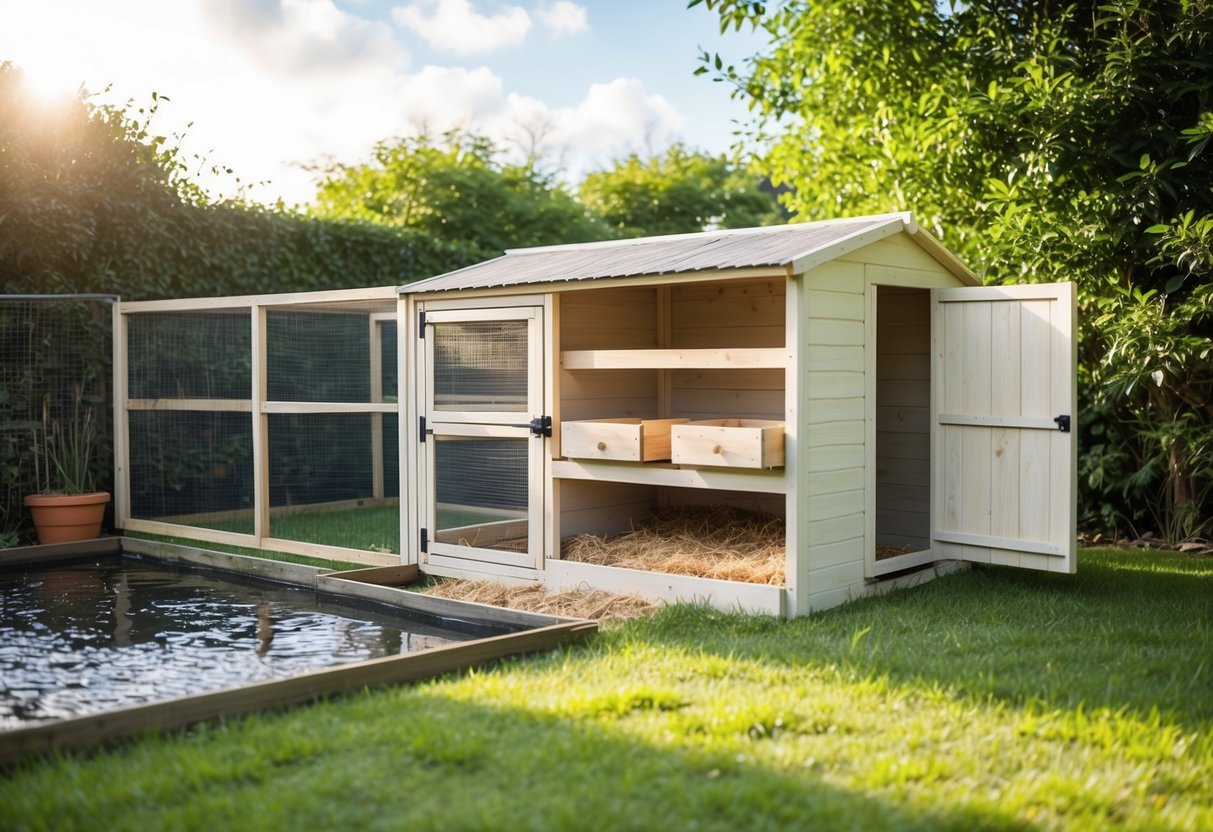
Maintaining a small chicken coop is vital for the health of the chickens and the overall cleanliness of the space. Regular cleaning and smart flooring choices can make upkeep easier. Following a routine inspection can prevent issues before they arise.
Cleaning and Disinfecting
Cleaning a chicken coop involves more than just picking up waste. It’s essential to do a deep clean regularly. This includes removing bedding, cleaning surfaces, and disinfecting areas to eliminate harmful bacteria.
To start, remove all bedding and accessories. Use a shovel or scoop to clear out waste. Then, scrub surfaces using a mixture of vinegar and water or a soap solution. Disinfect with a pet-safe cleaner.
After cleaning, allow the coop to dry before adding fresh bedding. Regular cleaning can help keep the chickens healthy and the coop odor-free.
Flooring Solutions for Easy Maintenance
Choosing the right flooring can significantly ease cleaning tasks. Vinyl flooring is one of the best options. It is durable, easy to clean, and resistant to moisture.
Vinyl sheets can be laid down over a plywood base. This creates a smooth surface that prevents waste from sticking. Sweep or use a vacuum for daily maintenance.
For added comfort, consider adding straw or wood shavings on top. This also helps absorb moisture and control odors.
Other options include sand, which is also easy to clean, or concrete, though concrete may be harder on chickens’ feet.
Regular Inspection Routines
Regular inspections are key to ensuring a chicken coop remains safe and healthy. Inspect the coop at least once a week. This helps catch problems like pests or water leaks early.
Check for signs of wear and tear. Look at the roof for leaks and the walls for cracks. Inspect doors and window screens to make sure they are secure.
Also, monitor the chickens’ health during inspections. Look for any signs of distress or illness. Keeping a close eye helps to address issues quickly and maintain a healthy flock.
Alternative Coop Designs
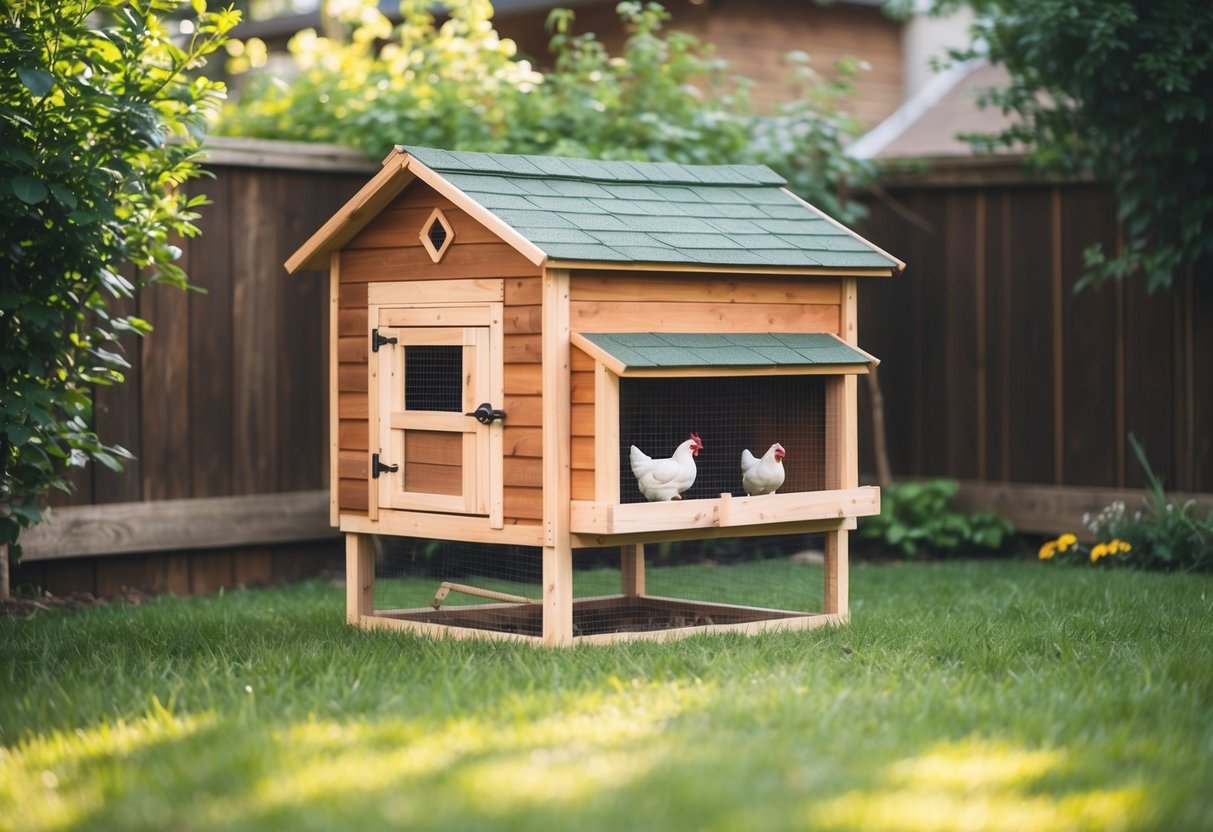
Exploring different chicken coop designs can provide both functionality and creativity. Two popular options are mobile chicken coops and upcycled materials, each offering unique benefits for chicken keepers.
Mobile Chicken Coop Advantages
Mobile chicken coops, also known as “chicken tractors,” allow owners to move their coops around the yard. This method has several key benefits.
- Fresh Pasture: Moving the coop gives chickens access to fresh grass and insects. This promotes better nutrition and health.
- Reduced Cleanup: Relocating the coop minimizes waste buildup in one area, making it easier to manage the coop’s cleanliness.
- Versatility: A mobile coop can fit various spaces, whether a large backyard or a smaller urban lot.
- Pest Control: By regularly changing locations, chickens help control pests and improve soil quality, which can benefit gardening.
With these advantages, mobile chicken coops are an excellent choice for chicken owners wanting to maximize their flock’s well-being.
Upcycled Materials for Eco-Friendly Coops
Using upcycled materials is an effective way to build an eco-friendly chicken coop. This approach not only saves money but also helps the environment.
- Types of Materials: Pallets, old doors, and windows can be creatively repurposed into cohesive coops. These materials are often readily available and affordable.
- Custom Designs: Upcycled coops can be unique and tailored to specific needs. Owners can create coops in various shapes and sizes, depending on available space.
- Durability: Many upcycled items are sturdy and weather-resistant, making them suitable for outdoor use.
- Sustainability: By choosing recycled materials, owners reduce waste and contribute to a more sustainable lifestyle.
This option is both creative and resourceful for those looking to build a coop with a personal touch.
Planning and Building Your Coop
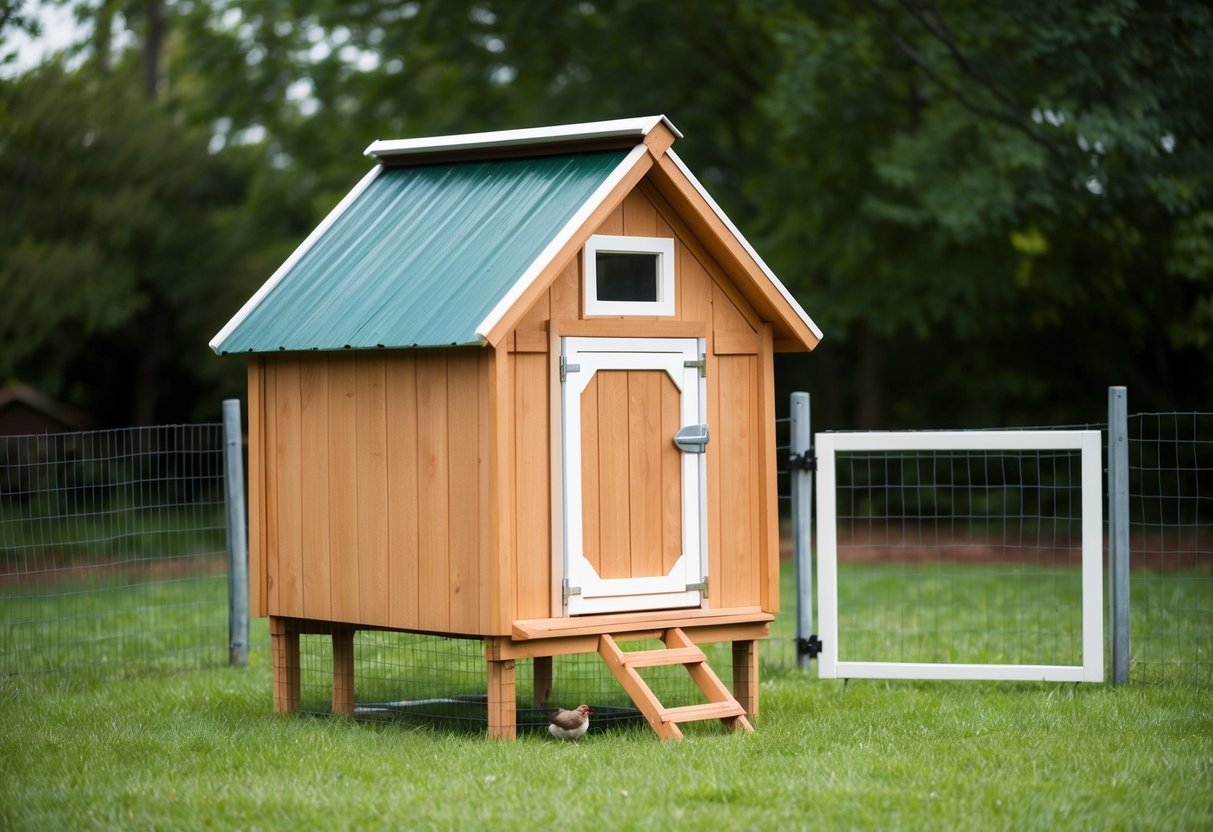
When planning and building a small chicken coop, it’s essential to consider location, design, and construction techniques. These factors help ensure a safe and comfortable environment for the chickens.
Choosing a Location
Selecting the right location is crucial for a chicken coop. The chosen spot should have adequate sunlight and shade. Chickens thrive in areas that receive morning sunlight but have shade during the hottest part of the day.
It’s important to avoid low-lying areas where water may collect. A dry location helps prevent moisture issues. Additionally, the coop should be located close to the house for easy access and monitoring.
Accessibility to utilities, like water and electricity, can enhance the coop’s functionality. Lastly, ensure the area is safe from predators to protect the chickens.
Designing Your Chicken Coop Plans
Effective chicken coop design considers both the chickens’ needs and practical construction. A good starting point is to determine the coop size based on the number of chickens.
A common guideline is 3 to 4 square feet of space per bird. Inside, including roosts, nest boxes, and eating areas is essential. Each nest box should accommodate 2-3 hens.
Plans for a small coop can often be adapted from available resources. For instance, easy chicken coop plans can provide inspiration for effective designs. Blueprints should also consider ventilation to keep the air fresh and reduce odors.
Construction Tips for Beginners
Building a chicken coop can seem daunting, but following some simple tips can make it manageable. First, gather all necessary tools and materials before starting. Basic materials include wood, wire mesh, and roofing.
Begin with a solid foundation to keep the coop stable. Pressure-treated wood is a good choice for the base. When assembling the walls, ensure they are sturdy enough to withstand weather conditions.
Adding a secure door is vital for keeping the chickens safe. Using sturdy hinges and a latch is recommended. Lastly, coat the wood with non-toxic paint or sealant to protect it from moisture. Making these choices will contribute to a robust and functional chicken coop.
Frequently Asked Questions
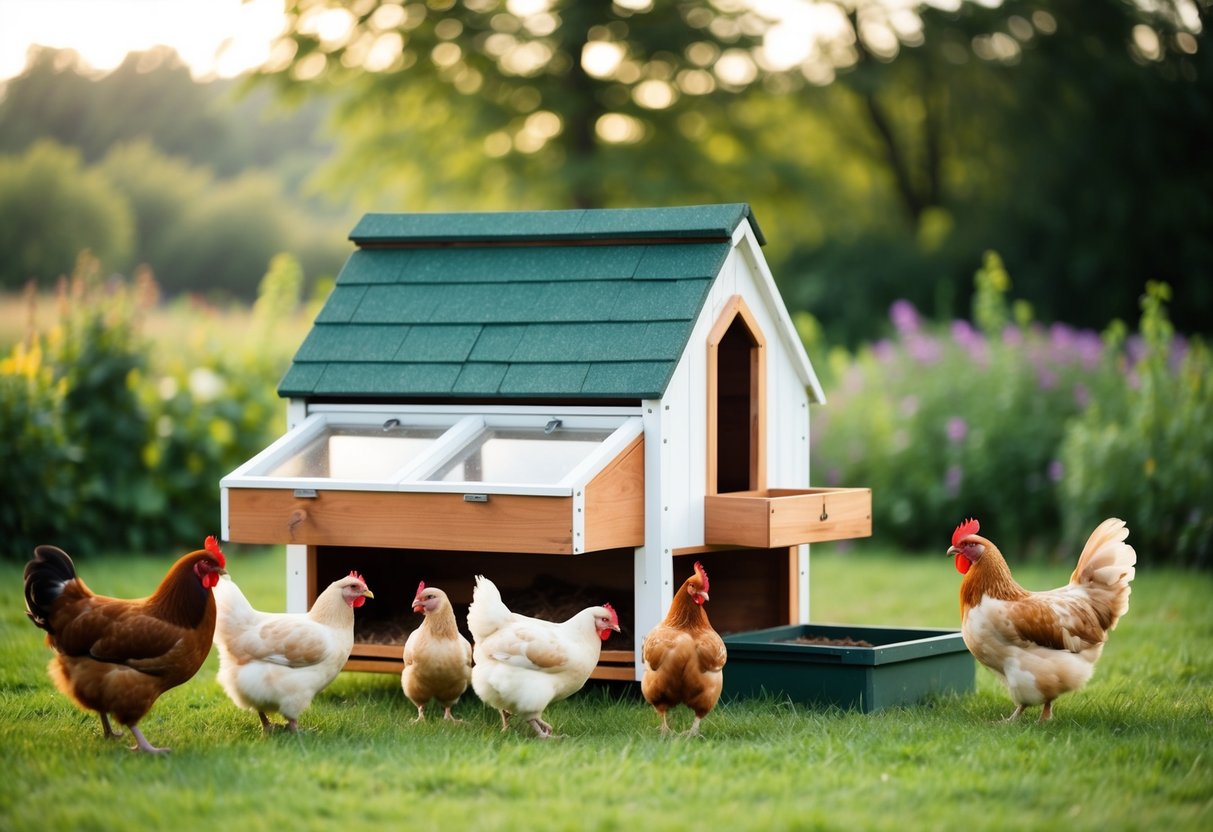
Many people have queries about building and maintaining small chicken coops. This section addresses practical tips and considerations that make creating a suitable environment for backyard chickens easier.
How can I build a small chicken coop on a budget?
Building a small chicken coop on a budget is entirely feasible. Using recycled materials like pallets or old fencing can significantly cut costs. Simple designs require fewer materials, and choosing a basic structure can also save money.
What are some simple design plans for a small chicken coop?
Design plans for small chicken coops can be straightforward yet effective. Many plans focus on a rectangular shape with proper ventilation and nesting boxes. Online resources provide sketch-style blueprints that help beginners visualize the coop layout.
How many chickens can comfortably fit in a small coop?
A small chicken coop can typically house 3 to 6 chickens, depending on the size. A rule of thumb is to allow 4 square feet of indoor space per chicken. This ensures they have enough room to move around comfortably.
What materials are recommended for constructing a small chicken coop?
Recommended materials for a small chicken coop include wood, wire mesh, and roofing materials like shingles or metal. Pressure-treated lumber is durable for framing. Wire mesh is crucial for security and allowing ventilation without letting chickens escape.
Can you suggest any free chicken coop plans suitable for a small backyard?
Many websites offer free chicken coop plans tailored for small spaces. These plans include step-by-step instructions and a list of materials needed. Checking platforms like Pinterest or homesteading blogs can yield valuable resources.
What are the essential features to include in a walk-in chicken coop?
A walk-in chicken coop should include adequate ventilation, nesting boxes, and a secure run area. Easy access for cleaning and egg collection is important. Additionally, ensuring safety from predators is a key feature to incorporate in the design.

